Canoeing the Mangroves of Khor Kalba
Canoeing the Mangroves of Khor Kalba
by Gerry BuzzellCanoeing in the mangroves was an outing organized by Debbie Handley, who seems to be the ENHG organizational dynamo. A company in Dubai, Desert Rangers, has the exclusive right to run canoeing outings in the Khor Kalba mangroves. They supplied the canoes and we supplied the manpower. They supplied two types of canoes - white fibreglass 18 foot two-man canoes (except for colour, identical to my canoe in Vermont), and larger red Coleman products, suitable for three people with the third sitting immobile in the middle. Sadly, they had had one of the two-man canoes stolen the night before; the guy I talked with said that these ones cost the company about 10,000dhs to import from Canada. They are insured, of course, but the loss was a blow to them, not least because the thieves also cut all the canvas straps used to secure the canoes to the trailers.
Linda and I used one of the smaller canoes and were the first ones on the water.
The mangrove area of Khor Kalba was described to us as a left hand, viewed in the pronation position (palm down). We were launched beside the bridge, near the base of the thumb. The 'thumb' is the inlet from the sea. The 'pinky' extends beside a sandbar separating it from the sea, and the three middle fingers extend inland. We initially took the 'index finger,' then briefly the 'thumb' (until turned back by a ranger who pointed out that the current there as the tide ebbs is very strong), then the 'pinky' and finally the 'middle finger.' We canoed from 8:00 until 11:00 and a glorious time it was.
The first hour or so we mostly marveled at the scenery. Up the 'index finger' the stands of mangrove trees on the starboard side (going in) opened in places giving us vistas of mountains and the white buildings of a nearby village. Then up the 'pinky,' with the sandbar on the port side and the mangroves to starboard. Finally, the 'middle finger,' with mangroves on both sides, up the finger as open water in the center became narrower and narrower and finally didn't quite end, but we turned around and went back out the way we came in.
The mangroves appeared as trees and bushes, trunks in the water, and branches and leaves forming dense aerial foliage. The Green Guide names them Avicennia marina; I understand that they are hardy and capable of withstanding high salinity conditions. In Kuwait, KISR (the Kuwait Institute for Scientific Research) is studying the possible use of mangroves to control shoreline erosion. Years ago, Alan Butler, a colleague in the University of Adelaide Zoology Department, was studying the effects of warm water from a nuclear power station on the ecology of local mangroves. That is the extent of my knowledge of mangroves.
The last hour or so was spent marveling at the animal life. In the shallow waters of the 'pinky,' we could see many snails and several hermit crabs inhabiting large conical snail shells. Along the sandbar were numerous gulls. But the small fishes were most in evidence. They were obviously being pursued by some predator, as they'd leap from the water in masses, like a starburst. We saw a couple of what looked like elongated heads peeping above the water, too far away to identify, making us think they were perhaps turtles chasing fish. Laurence Garey opined that they were snakes. Perhaps it was simply larger fish chasing smaller fish, as these piscine explosions seemed to become more numerous as the tide ebbed and the water became shallower. At times I was reminded of people doing "the wave" at Oiler games. Occasionally "the wave" encompassed the canoe and I tossed several small fish back into the water.
About 10 o'clock we began to see wading birds and, as the morning progressed, we saw more and more of them. Herons, mostly. A group of four curlews digging in the mud with their long curved bills. Sandpipers.
And one glorious white collared kingfisher.
Finally, at about 11 o'clock, with the current of the ebbing tide strong, we paddled back to our starting point, had our canoe pulled ashore by the Desert Ranger crew, and returned to civilization.
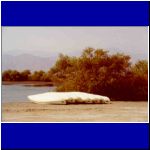 Canoes |
 Canoes |
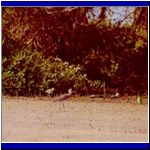 Curlews |
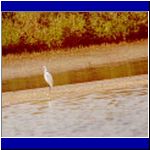 Egret |
 Heron in a tree |
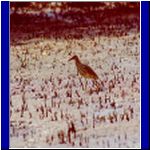 Heron on the shore |
 Jeff |
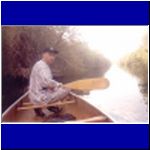 Jeff |
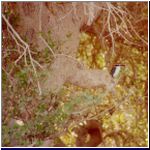 Kingfisher |
 Mangroves |
 Mangroves |
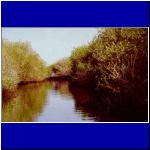 Mangroves |